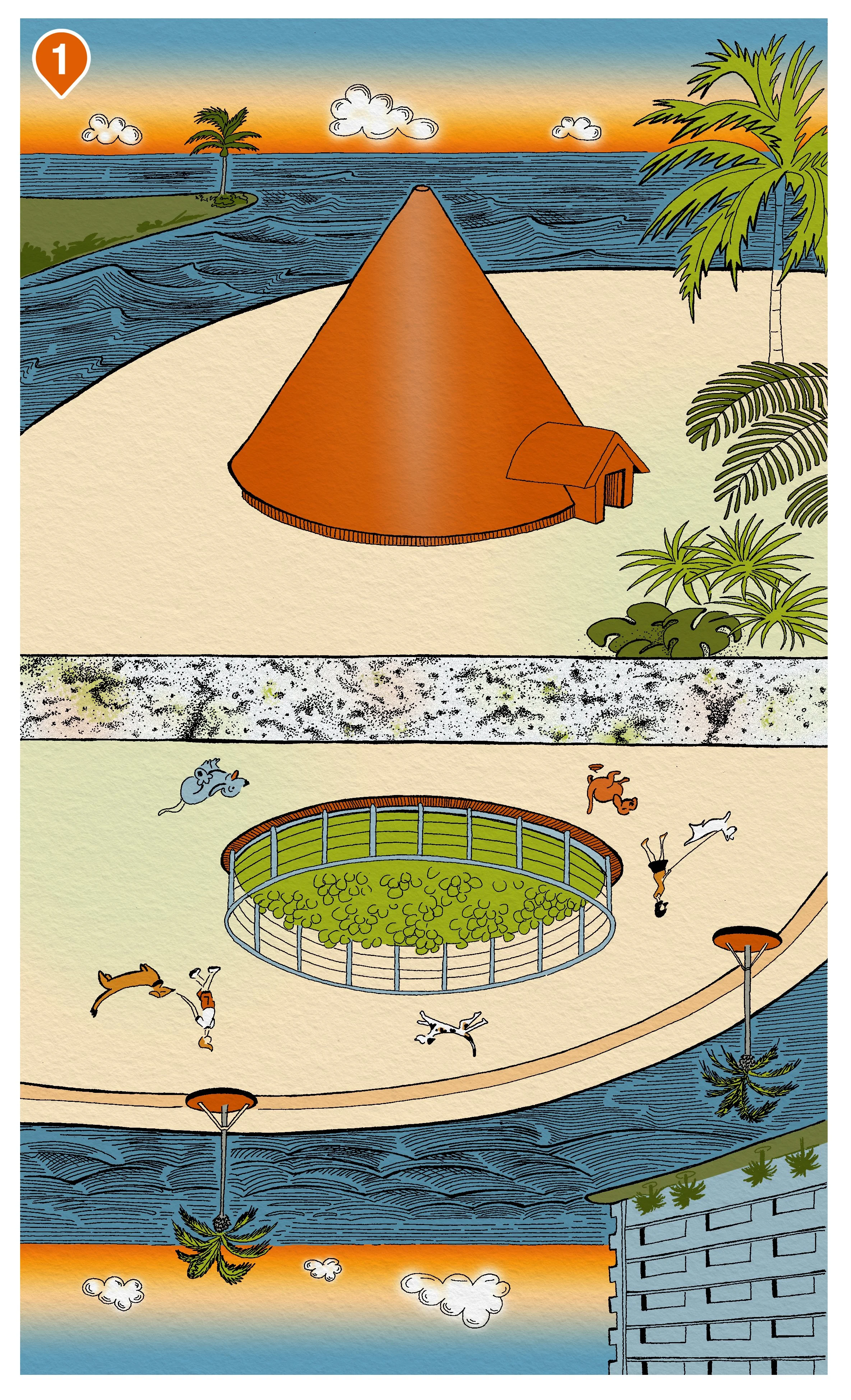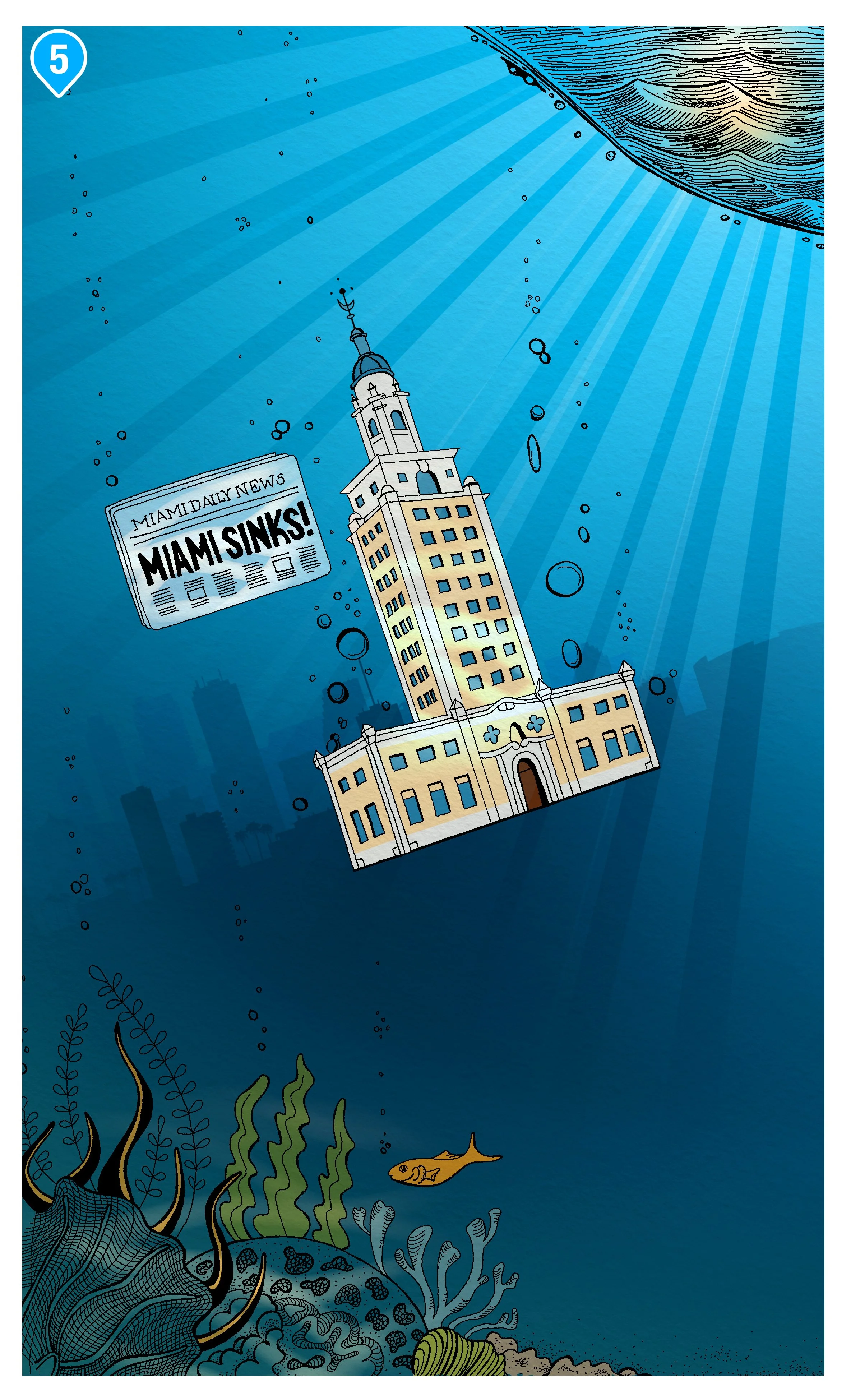A Distinct Guide to Miami
Understanding where you are extends far beyond geography alone. To truly capture the essence of a city, you must be willing to recognize your surroundings—the mindsets, cultural norms, and social cues that shape how people in that environment form meaningful connections.
Miami is full of people that have made it their home, many that are just passing by, others that see it as an opportunity... and to all a place to explore and have fun.
Consider this map your chance to acquaint yourself with Miami, even if you've been here for a while or since forever. It is a glimpse into moments in time through the eyes of those who saw it first - the people who were here before us, arrived later, and continue to make this city as vibrant as the scorching sun we all grumble about in the summer. It serves as a guide to historic buildings you didn't know existed or might have glimpsed without fully grasping their value to this city. They carry the spirit of our subtropical way of life, help us understand who we are as a community, and point out the issues that we continue to struggle with.
Despite its archeological importance, most Miamians are unaware of its existence. Considered to be the only cut-in-rock prehistoric structural footprint ever found in eastern North America, it is believed to have been of ceremonial nature created by Native Americans known as the Tequesta. The Tequesta lived in South Florida roughly 2,000 years, but by the 1800s most had died as a result of settlement battles, slavery, and disease.
Those of us who call Miami home may not consider them our ancestors, but they were the people that occupied these sunny lands before we came. I invite you to visit the circle and learn more about the Tequestas, Miami original inhabitants. You can see the artifacts recovered from the site at History Miami Museum where they are on display.
William Wagner might as well have come to Mars, South Florida was as secluded as U.S. land could be in the 1800s. Imagine the impossible task it was to cross the hot, swampy, alligator filled everglades, the journey could only be done by sea. However, the freedom the Homestead Act represented -to own land and start anew in the last frontier- trumped all fear and doubt (a sentiment most immigrants share.)
He built a home for his family in 1855. Eveline Aimar, his partner, was a dark skinned Creole born in South Carolina. In times of slavery, their interracial relationship surely posed a challenge where they came from. It seems like then as it is now, Miami is the town to start anew, be yourself, and love whoever you choose.
The Wagner House is the oldest house still standing in Miami.
The Brightline runs on the Florida East Coast Railway, the very same railway Henry Flagler built to take his trains all the way down to Key West. A successful entrepreneur, he was quite the eccentric billionaire of his day. As one of the founders of Standard Oil, he also built railroads, resort hotels, steamship lines, and even cities. The Standard Oil empire owned 90% of the U.S. oil refining business, making it the first industrial monopoly in the world.
To complete his Florida railway, Flagler exploited two brutal labor systems common in the decades following the Civil War: convict leasing and debt peonage. Today, Capitalism still sets the stakes for our pursuit of progress. What is compromised to justify our modern lifestyles? What is sacrificed as we follow the latest popular trend?
Socialite James Deering was an heir to international fortune. He was an arts connoisseur, international traveler, and cultural ambassador. Deering completed his visionary winter home Villa Vizcaya in 1922. Designed in the Mediterranean Revival style by architect F. Burrall Hoffman, design director Paul Chalfin (who was openly gay), and Colombian landscape architect Diego Suarez who envisioned the estate's gardens. Chalfin and Deering travelled through Europe together over the years to collect ideas and begin acquiring art, antiquities, and furnishings for the opulent Florida estate. Vizcaya, like many other Miami mansions of today, was built in lavish style. Known for throwing the best parties of the era, James Deering was in many ways our very own icon of the “Roaring Twenties.”
Originally completed in 1925 as the headquarters and printing facility for the newspaper Miami Daily News, the later known Freedom Tower serves now as a museum, a cultural and education center. It sits in the heart of Downtown Miami, an area that has seen much development in the last decade. Millions of dollars invested in pedestrian-friendly areas full of entertainment, retail, residential, and commercial venues. Including an $800 million dollar project to enhance three major highways. However, the investment on solutions for our most pressing problem, climate change, is but an exceedingly small percentage of that investment. The Museum of Arts and Design never disappoints, go visit it before Miami runs out of time.
The Fort Dallas longhouse is the earliest surviving example of native limestone construction in Miami. It is said to have been built by the slaves of William English -who owned a sugar plantation at the mouth of the Miami River. The building served as slave quarters, army barracks during the Seminole Wars, and finally as Julia Tuttle's home in 1891. Tuttle was an American businessperson who owned the land where Miami was built. Armed with orange blossoms as proof of Miami’s paradise-like weather, she convinced Henry Flagler to bring down his railroad and start a city. This gave rise to the global Miami brand as a destination of sunny beaches, fun filled vacations, and blown-up promises that contributed to the many housing bubbles this city has endured nearly since its establishment in 1896.






